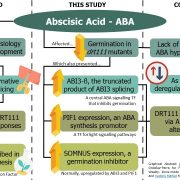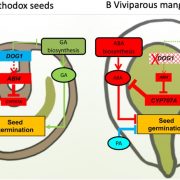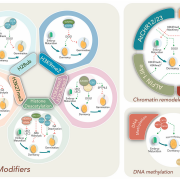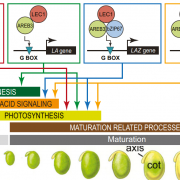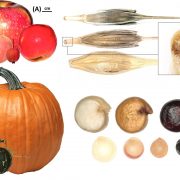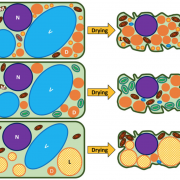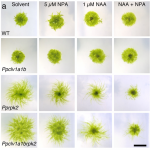Review: The great diversity in kinds of seed dormancy (Seed Sci. Res.) ($)
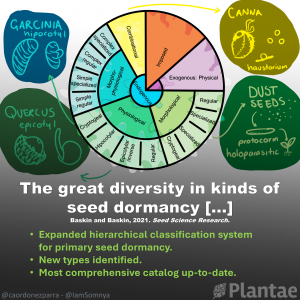 In 1967, Marianna G. Nikolaeva presented the first detailed system to classify seed dormancy based on its causes and the conditions required to break it. Later in 2004, Jerry and Carol Baskin devised a hierarchical classification system based on Nikolaeva’s proposal, which has been widely used by seed biologists all over the world. Now, the Baskins have come together again to bring us an updated and expanded version of the Nikolaeva-Baskin classification system. Most notably, several new dormancy kinds are included inside physiological, morphological and morphophysiological dormancy classes. For example, seeds whose epicotyl or hypocotyl emerge from the seed way after radicle protrusion now have a specific place in the system. Moreover, this system is the first proposal that includes specific categories for the dormancy found in orchids, mycoheterotrophs and holoparasites with undifferentiated embryos. Additionally, it reviews our current knowledge on the seed dormancy of plants with distinct seed morphologies, such as those of palms and seagrasses. This paper provides an up-to-date vision of seed dormancy, showing the outstanding diversity of mechanisms that shape germination in different species and ecosystems, making it a must-read for every plant biologist. (Summary and sketch by Carlos A. Ordóñez-Parra @caordonezparra and Eddy Mendoza-Galindo @IamSomnya) Seed Sci. Res. 10.1017/S096025852100026X
In 1967, Marianna G. Nikolaeva presented the first detailed system to classify seed dormancy based on its causes and the conditions required to break it. Later in 2004, Jerry and Carol Baskin devised a hierarchical classification system based on Nikolaeva’s proposal, which has been widely used by seed biologists all over the world. Now, the Baskins have come together again to bring us an updated and expanded version of the Nikolaeva-Baskin classification system. Most notably, several new dormancy kinds are included inside physiological, morphological and morphophysiological dormancy classes. For example, seeds whose epicotyl or hypocotyl emerge from the seed way after radicle protrusion now have a specific place in the system. Moreover, this system is the first proposal that includes specific categories for the dormancy found in orchids, mycoheterotrophs and holoparasites with undifferentiated embryos. Additionally, it reviews our current knowledge on the seed dormancy of plants with distinct seed morphologies, such as those of palms and seagrasses. This paper provides an up-to-date vision of seed dormancy, showing the outstanding diversity of mechanisms that shape germination in different species and ecosystems, making it a must-read for every plant biologist. (Summary and sketch by Carlos A. Ordóñez-Parra @caordonezparra and Eddy Mendoza-Galindo @IamSomnya) Seed Sci. Res. 10.1017/S096025852100026X


